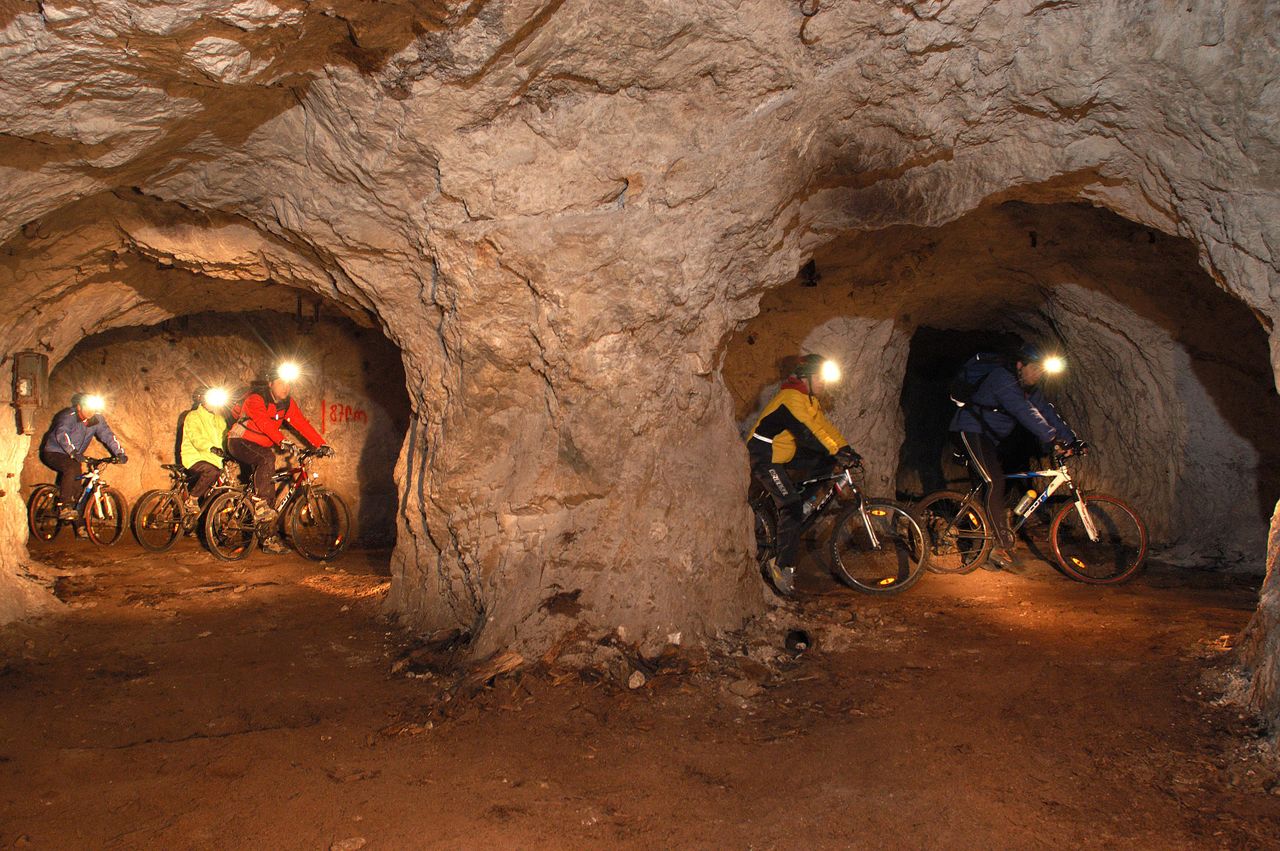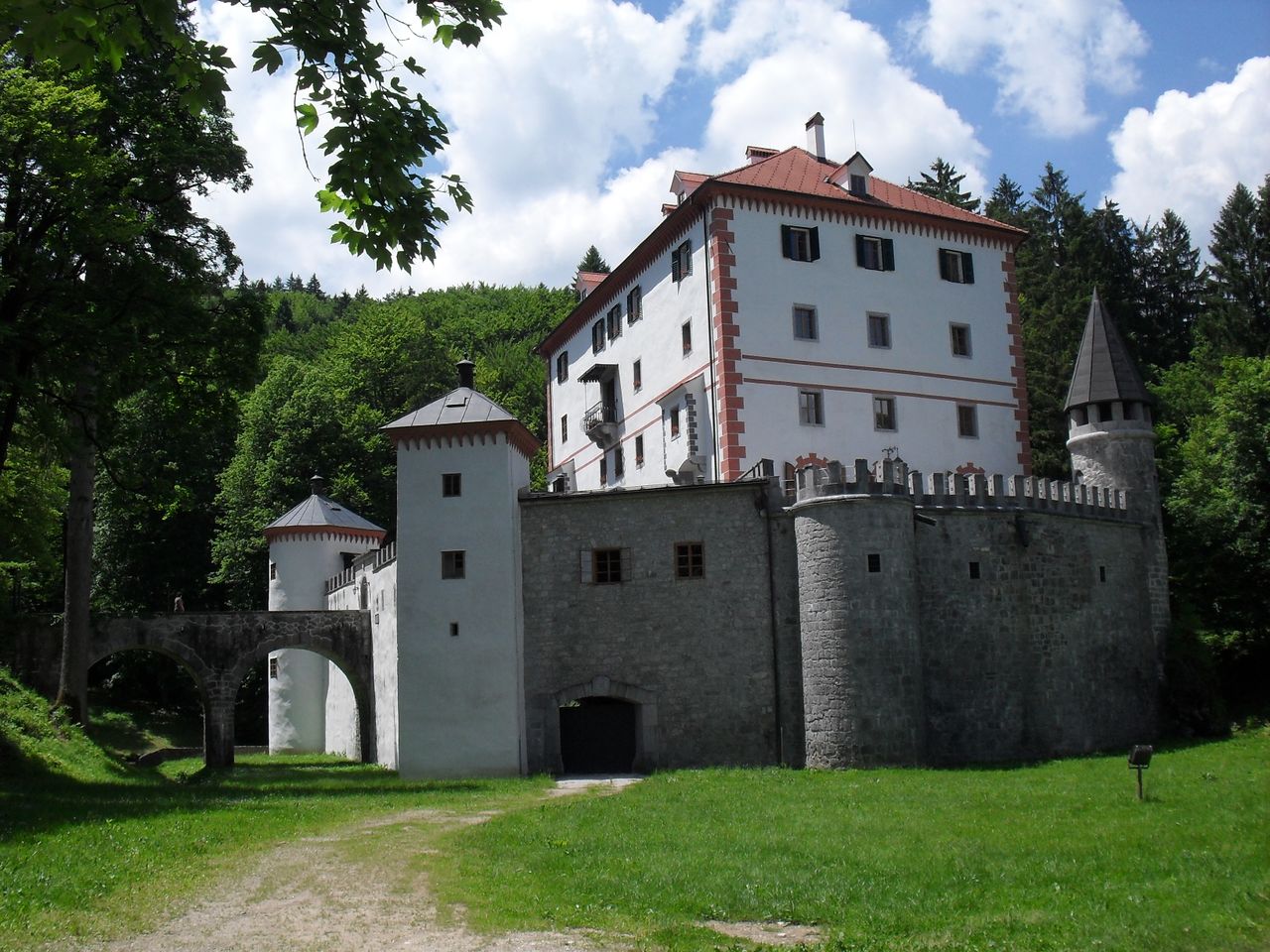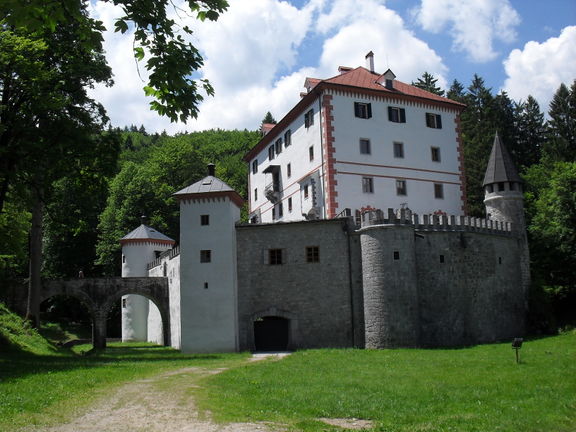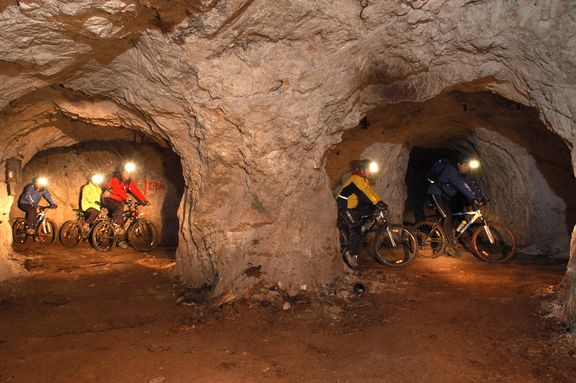 The guided cycling tour along the Podzemlje Pece, Tourist Mine and Museum in Mežica.
The guided cycling tour along the Podzemlje Pece, Tourist Mine and Museum in Mežica.
After its closure in 2004, the Mežica lead and zinc mine was turned into Podzemlje Pece, Tourist Mine and Museum which was nominated for the European Museum of the Year Award 2007. First notes about lead ore in this area are from 1424 and the first written sources about mining under the Mount Peca are from 1665. The old mine administration building of 1927, located in front of the mine entrance, has been converted into a museum with a number of collections (a mining exhibition and the collection of Maks Kunc, miner and photographer).
NOT ROBOT, WRITING DONE, INFOBOX DONE, PROOFREAD DONE, FERTIK, NOVERIFY, NODEPO, PHOTO, FEATURED, Article, NO LOGO, Museums, Articles maintained by Admin, Monuments and sites, Industrial and technical heritage
 Snežnik Castle, being the only Slovene Castle with genuine furnished interiors, came under the administration of the National Museum of Slovenia after its restoration in 2008.
Snežnik Castle, being the only Slovene Castle with genuine furnished interiors, came under the administration of the National Museum of Slovenia after its restoration in 2008.
The earliest record of Snežnik Castle dates from 1269 when it was owned by the patriarchs of Aquileia. The castle lies on a strategic site, on the edge of the Lož Valley under the Snežnik mountains surrounded by a beautiful park and vast forests with diverse and rich flora and fauna including big game ranging from bears, boars, wolves and lynxes, to wild fowl and deer, and was always favourite hunting residence. Throughout the centuries the castle has changed owners many times, but in 1853 the castle and associated forests of Snežnik were bought by German Prince Otto Viktor Schönburg-Waldenburg, who gave it to his third son Georg. Thereafter it remained in the Schönburg-Waldenburg family until 1945. The last caretaker Leon Schauta saved Snežnik Castle from destruction after the Second World War by keeping good relations with the locals before and after the war. Restoration began in the 1960s and the castle opened to the public in 1970/71. In 1983 two additional exhibition rooms were opened. After a restoration completed in 2008, the romantic state-owned castle came under the administration of the National Museum of Slovenia and is the only Slovene Castle with genuine furnished interiors.
Since 2014 the Floating Castle Festival has embedded into the picturesque surroundings of the castle the late summer "folk-puppet-music-theatre site-specific event".
NOT ROBOT, WRITING DONE, INFOBOX DONE, PROOFREAD DONE, FERTIK, NOVERIFY, NODEPO, PHOTO, FEATURED, Article, NO LOGO, HAS MAP, Museums, Monuments and sites, Articles maintained by Ivan Pirnat, Castles, COVER







